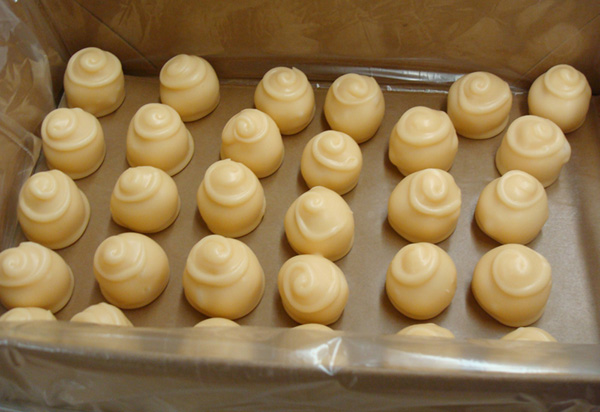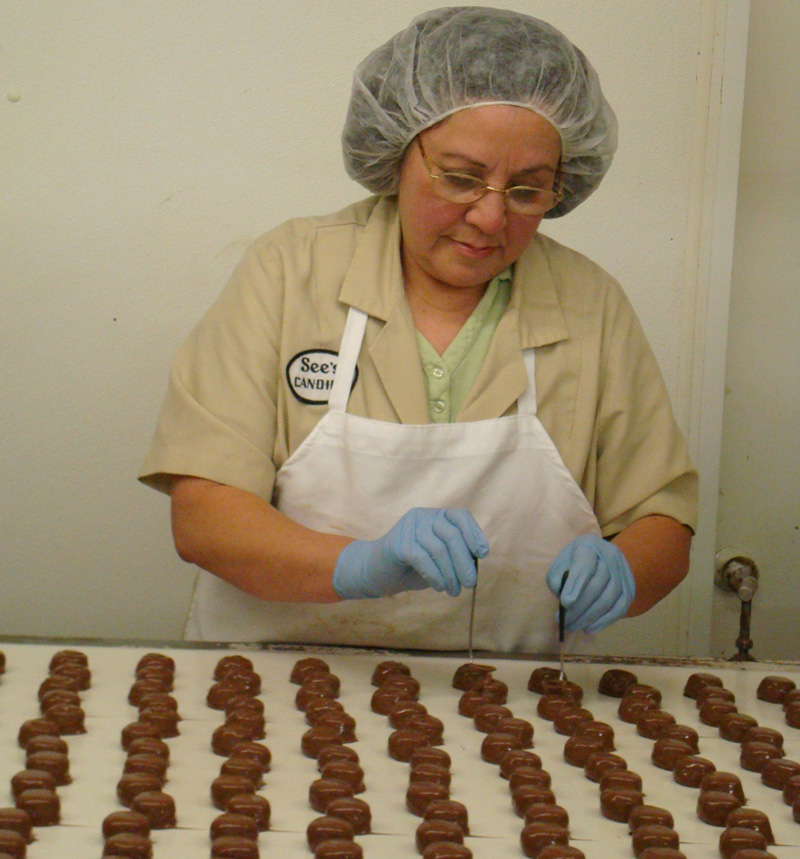A Peek Inside the See’s Candy Factory
I’m a “nuts and chews” gal. Always have been. Always will be.
Like so many of you out there, See’s Candy has been a constant in my life, through so many Valentine’s Day, Father’s Day, Mother’s Day, and Christmas celebrations. The familiar white box, with its old-fashioned cameo photo of founder Mary See, was a sweet staple in my family’s house.
As a child, I sometimes got scolded by my Dad for pinching the corners of all the candies in the box to see what fillings they held inside. As an adult, I was in awe of my friend Lori, who had the uncanny ability to discern what each piece of candy was, just by looking at it.
With my long ties to the candy, it’s no surprise that I jumped at the chance when recently invited to tour See’s three-story factory in South San Francisco. (Sorry, you sweet tooths out there: See’s doesn’t offer regular tours; they are by invitation only.)
The aroma of sugar, chocolate and butter hits you the moment you walk into the quaint lobby, with its frosted Deco light fixtures and spic-and-span, black-and-white checkerboard floor. Lest you get famished while you wait for your tour guide, there is a domed glass serving dish in the waiting area that holds candy samples you can help yourself to.

This is one of two See’s factories. The other, about the same size, is in Los Angeles. This is the busy time for the candy company, as 350 employees in the San Francisco factory alone gear up to turn out chocolate Santas, and other Christmas treats. The candy with the longest shelf-life is made first (lollypops, which are good for 100 days); the ones with the shortest shelf-life are made last (cream-centered bonbons, which keep for only 15 days).
All seven production lines operate during the fall/winter holiday season. On a given day, the San Francisco locale churns out anywhere from 42,000 to 72,000 pounds of candy a day.
See’s has more than 200 retail stores now, as far east as Chicago; as well as airport kiosks and temporary holiday storefronts.
The See family no longer owns the company, which it began in 1921 in Los Angeles. In 1972, they sold it to investment manager Berkshire Hathaway, Inc. Nope; you won’t find Berkshire Hathaway CEO Warren Buffet wandering around here, nibbling on molasses chips and divinity. But he does have a fondness for the candy, says my guide, Production Manager Robert McIntyre. Indeed, you will find See’s Candy at Berkshire Hathaway shareholders meetings, usually peanut brittle — Buffet’s favorite — in boxes with his likeness on the cover.

